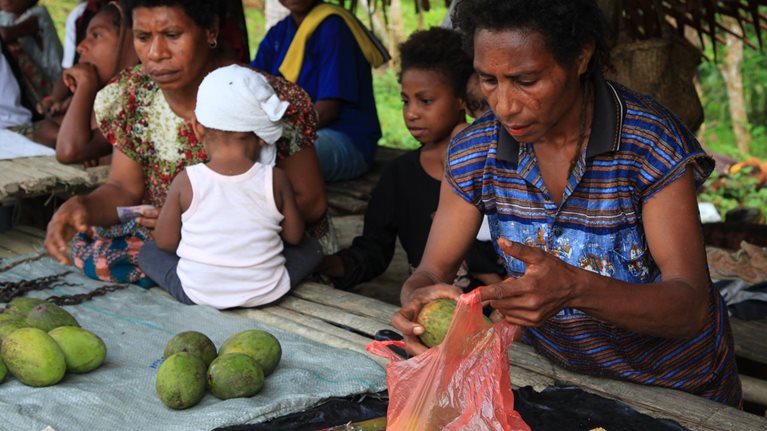Millions of children die every year from water-related illnesses. Women collectively spend more than 200 million hours a day collecting water. In this interview with McKinsey’s Rik Kirkland, the cofounders of the nonprofit organization Water.org, Matt Damon and Gary White, discuss practical ways to solve the global water and sanitation crisis. An edited transcript of Damon’s and White’s remarks follows.
Interview transcript
Ending water scarcity
Matt Damon: Every 20 seconds, a child dies somewhere on the planet because of lack of access to clean water and sanitation. Millions of children are dying every year from completely preventable diseases.
Gary White: Women spend 200 million hours every day walking to collect water. And kids miss 443 million school days every year because of this. So it’s a huge toll on people’s lives and health, but overall it stagnates the economic development that so many people need to climb out of poverty.
Matt Damon: It would take actually less than 1 percent of the drinkable water to give every single person—the 800 million or so who currently lack access—to get them 40 to 50 liters of water a day. I think there’s the misunderstanding that there’s just not going to be enough for everybody to survive, because that certainly is not true.
Gary White: If you just look at increasing the efficiency of agricultural use of water by only 2 percent, again, that would be enough to give people basic water, all 800 million that lack it right now. So it’s not a matter of, “Is there enough water to go around for the poor,” because the poor are coming to the table with a sipping straw relative to what everybody else is taking out.
Matt Damon: It’s not a supply problem; it’s a distribution problem. And I think there’s this sense that, because we’re going to go from 7 billion to 8 billion to 9 billion, and everybody’s agitating about water scarcity and water security, we need to dispel the notion that there’s not going to be enough water for the poor—because it’s simply not true.
How microloans help water flow
Gary White: We’re coming at it not from a charity approach—because there’s never going to be enough charity in the world for everybody to get access to safe water and sanitation. What we help the poor do is tap into their intrinsic power as customers and as citizens. And what that means is basically helping them get access to microloans so that they can get a water connection at their home.
Matt and I were just in India last August and met a woman there who was paying 1,200 rupees every month for the water that she needed to buy from her water vendors in her neighborhood and for her family to go use the public toilet. And so she was paying what was a huge amount of her income in order to be able to do this.
And instead, what we were doing with our local microfinance partners is offering her a loan so she could pay her connection fee to the local water utility and so she could build a toilet at her home. And now her loan payments for the next two years will only be 1,200 rupees a month, but then after that, all she’ll have to pay is a small water bill. And so she’ll have so much more income available for her and her family after she does that. There are places that people can participate financially and come up with their own solutions if they’re just given a little bit of a leg up.
Matt Damon: In fact, when we were in India and talking to our microfinance partners, we said, “What’s the biggest bottleneck to these loan programs? What’s the big choke point for you guys?” And they said, “Access to affordable capital.” And we said, “Are you kidding me?”
And they said, “No, no. The demand is absolutely there. We could be doing many, many more of these loans.” The problem is, they get these wholesale loans from the commercial banks at, say, 15 percent. Once they add on their percentage to keep their lights on, these loans are going out at 22 to 24 percent—it’s very expensive to be poor.
So there is a market there, there’s a real market there. But our challenge now is to look at that 22 to 24 percent and try to drive it down. And we know all of these people who want their money to do good things. There’s got to be a way to marry these two up. And so that’s what our latest idea is—to essentially try to engage those social capital markets.
Our partners have disbursed a quarter of a million loans, and the repayment rate is 98 percent; 94 percent of the recipients are women. WaterCredit is a remarkable program. It’s been successful beyond anything we could have really hoped. And so, as we keep running these numbers up, and keep proving and reproving the model, that’s really our best argument going forward to engage the social capital markets.
Finding meaning beyond acting
Matt Damon: I was in Zambia in 2006 on a trip that Bono actually put together. He does these trips for people who want to study these issues of extreme poverty, and each day has a different learning focus. And it was fascinating; it was like going back to college. It was really great.
And one of those days, the focus was water. And I ended up having an interaction with a 14-year-old girl that I went on a water collection with. And in talking to her—it’s a very rural village in Zambia—I said, “Are you going to live here when you grow up?” And the translator asked her and she smiled, and she said, “No, no, no. I’m going to move to the big city of Lusaka, and I’m going to be a nurse.”
And I had this great connection with her, because I remember being 14 and me and Ben Affleck saying, “We’re going to move to New York, to the big city, and we’re going to be actors.” And I remembered that feeling, and I really connected with this girl.
And as I was driving away, I realized that, had someone not had the forethought to sink a bore well a mile from this kid’s house, her entire life would revolve around scavenging for water. She wouldn’t be in school. So leaving aside the needless death and suffering, right, there are these issues that Gary had alluded to earlier about taking hope out of somebody’s life—literally taking your hope and your dreams away. That was a big moment for me.


